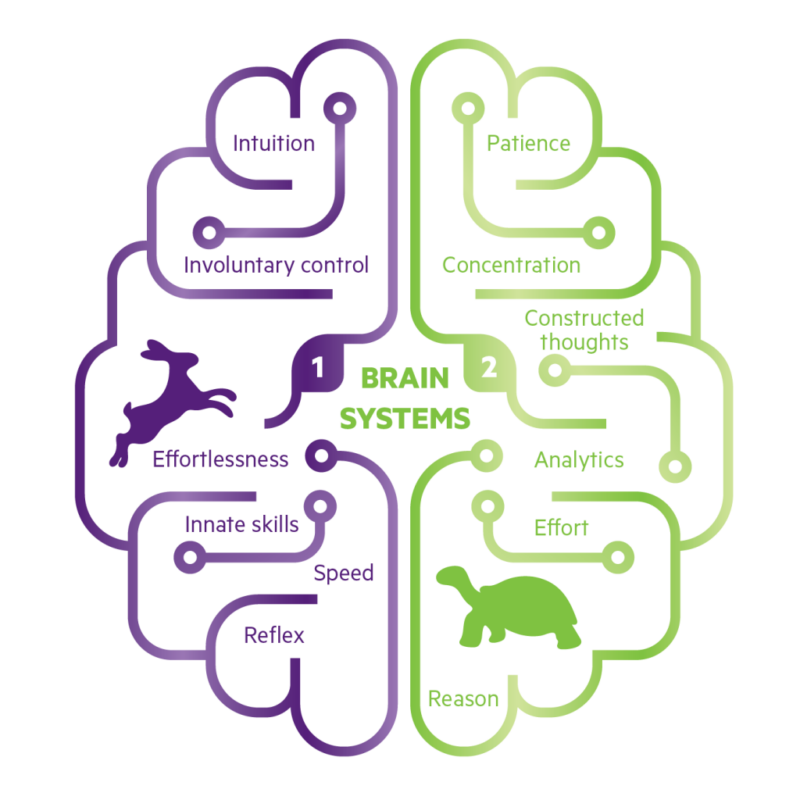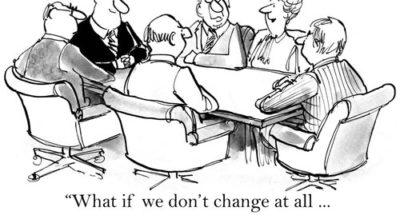Navigating complexity and overcoming biases in modern leadership
In today’s rapidly changing and complex world, effective leadership demands more than traditional skills. As I summarised last week, one crucial capability is sense-making, the ability to understand and act upon complex, uncertain environments. This concept, introduced by Karl Weick and further explored by Christian Madsbjerg, emphasises the importance of contextual and cultural understanding in leadership. However, to truly excel in sense-making, leaders must also address and overcome their cognitive biases, as highlighted in Daniel Kahneman’s seminal work, “Thinking, Fast and Slow.”
I am currently revisiting Thinking, Fast and Slow, following author Daniel Kahneman’s death in March this year aged 90, this time via Audible.
The bat and ball puzzle
Let’s start with a simple puzzle:
- A bat and a ball together cost $1.10.
- The bat costs $1.00 more than the ball.
- How much does the ball cost?
(Quickly write your answer down, and I will discuss at the end of this article)
The Influence of Cognitive Biases on Leadership
Daniel Kahneman’s “Thinking, Fast and Slow” explores how the thinking processes of humans, leaders and otherwise can lead us astray. Kahneman distinguishes between two modes of thinking:
- System 1 (Fast Thinking): This mode is automatic, quick, and often relies on intuition and heuristics. While it can be efficient, it is also prone to biases and errors.
- System 2 (Slow Thinking): This mode is deliberate, analytical, and requires effort. It is more reliable but slower and more resource-intensive.

At the core of good leadership is a fundamental understanding that ALL humans are subject to bias.
“Until you make the unconscious conscious, it will direct your life and you will call it fate.” Carl Jung
For leaders, respecting the existence, in themselves and others of System 1 and 2 thinking is crucial to help identify when biases might be influencing their decisions. Common cognitive biases that affect leadership include:
- Confirmation bias: The tendency to search for, interpret, and remember information that confirms pre-existing beliefs. Leaders may disregard information that contradicts their views, leading to flawed decision-making.
- Overconfidence bias: Leaders may overestimate their knowledge, abilities, and the accuracy of their predictions, leading to risky decisions without sufficient evidence.
- Anchoring bias: The tendency to rely heavily on the first piece of information encountered (the “anchor”) when making decisions, even if it is irrelevant.
- Availability heuristic: Leaders might judge the likelihood of events based on how easily examples come to mind, which can lead to skewed perceptions of risk and opportunity.
Overcoming biases through effective sense-making
Effective sense-making, as described by Weick and Madsbjerg, involves structuring the unknown to take meaningful actions. It requires leaders to create a plausible understanding of a shifting environment, test this understanding through interaction and data collection, and refine it based on credibility. Integrating insights from “Thinking, Fast and Slow” into sense-making processes can help leaders mitigate cognitive biases and make better decisions.
Practical Steps for Leaders
- Seek diverse data sources: Leaders should combine various types of data—financial reports, direct observations, and personal interviews—for a well-rounded understanding. This approach counters the availability heuristic by providing a broader range of information.
- Involve others: Engaging different perspectives helps refine mental models and avoid confirmation bias. Leaders should solicit input from a diverse group of stakeholders to challenge their assumptions and broaden their understanding.
- Move beyond stereotypes: Understanding each situation’s unique aspects without relying on oversimplified views helps combat anchoring bias. Leaders should approach each new situation with an open mind and be willing to adapt their frameworks as new information emerges.
- Be sensitive to operations: Learning from frontline experiences and current trends can help anticipate future changes and reduce overconfidence bias. Leaders should stay connected with the day-to-day realities of their organisation to make more informed decisions.
Case Study: Square Holes’ Approach
Square Holes, an agency specialising in cultural research and insights, exemplifies how to effectively integrate sense-making and overcome cognitive biases:
- Ethnographic research: Immersing themselves in the environment of their subjects to gather deep, contextual insights helps counter the availability heuristic by providing rich, firsthand data.
- Narrative development: Crafting compelling stories from data to convey insights in a relatable and actionable way helps overcome confirmation bias by presenting diverse perspectives.
- Holistic understanding: Combining quantitative and qualitative research to provide a comprehensive view of the cultural landscape counters overconfidence bias by grounding decisions in robust data.
- Iterative feedback: Continuously refining understanding based on new data and feedback helps address anchoring bias by encouraging flexibility and adaptation.
Conclusion
Navigating the complexities of modern leadership requires a deep understanding of both the external environment and internal cognitive processes. By integrating the principles of sense-making with the insights from “Thinking, Fast and Slow,” leaders can mitigate cognitive biases and make more informed, effective decisions. Embracing a holistic approach to data collection, engaging diverse perspectives, and staying connected to the operational realities of their organisations will enable leaders to adapt and thrive amidst continuous change.
…
The bat and ball puzzle exemplifies how easily our intuition can lead us astray. Most people quickly answer that the ball costs 10 cents. However, this answer is incorrect. If the ball costs 10 cents and the bat costs $1.00 more, then the bat would cost $1.10, making the total $1.20, not $1.10. The correct answer is that the ball costs 5 cents. If the ball costs 5 cents, then the bat costs $1.05, making the total $1.10. This puzzle illustrates how our intuitive System 1 thinking can lead us astray, while the correct answer requires the more deliberate and analytical System 2 thinking.
It highlights the need for leaders to engage in slow, deliberate thinking to ensure their decisions are well-grounded and comprehensive. By recognising and overcoming these biases, leaders can better navigate the uncertainties of their environment and lead their organisations to success.




